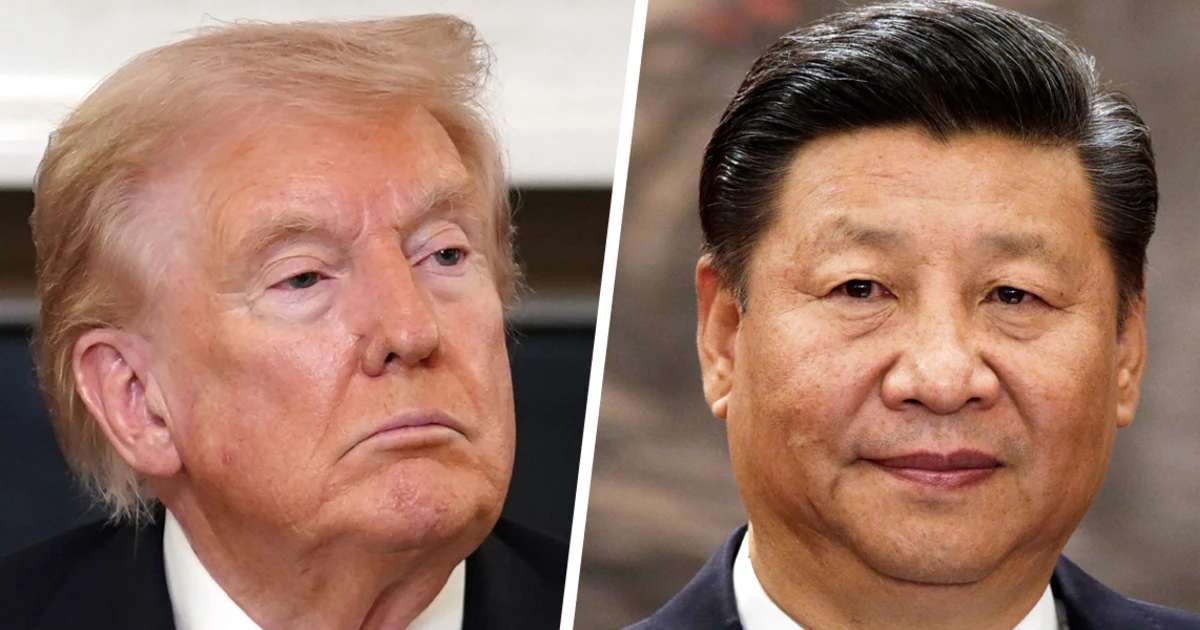Copyright MSNBC

“A lot of problems are going to be solved,” President Donald Trump predicted ahead of his meeting with Chinese President Xi Jinping Thursday morning in Busan, South Korea. The summit came just days after the president threatened an additional 100% tariff on Chinese goods. After Thursday’s meeting, the two countries announced not so much a full-fledged deal as a truce: China will pause the limits on exports of rare earth minerals that sparked Trump’s 100% tariff threat, while the U.S. will cut tariffs related to fentanyl, from 20% to 10%. “On the scale from zero to 10, with 10 being the best, I would say the meeting was a 12,” Trump said. But no matter how rosy a picture Trump paints of this new deal, the reality will be far bleaker. Agreeing not to act on an outrageous threat isn’t progress. The core issues that have defined the United States’ relationship with China remain unchanged — and many have worsened since Trump took office. When it comes to competition with China, by any measure Americans are worse off than a year ago. Perhaps no sector has been hurt more by Trump’s trade war than American farmers. The repercussions for the Trump administration’s foreign and economic policies are clear. The cost of living in America continues to increase thanks to Trump’s tariffs. A recent report from Goldman Sachs found that American consumers are bearing more than half of the cost of those tariffs. And, as more companies exhaust their pre-tariff inventories, the percentage passed on to consumers will likely increase. American manufacturers are also struggling with the impact on the goods and materials they use in production. At last count, the country had lost 42,000 manufacturing jobs since Trump’s “liberation day” tariff announcement in April. Perhaps no sector has been hurt more by Trump’s trade war than American farmers. Last year, China bought more than $12 billion worth of American soybeans — far more than any other country. But in response to Trump’s tariffs, China began boycotting the purchase of U.S. soybeans and also reduced its purchases of other American agricultural products, including almonds, wheat and beef. American farmers are dealing with this financial hit as they face higher prices for fertilizers and farm equipment as a result of Trump’s policies, as well as higher borrowing costs. Today, more than half of all American farms are losing money, according to the American Farm Bureau Federation. In the 12 months ending in June, for example, farm bankruptcies were up 56% compared with the year before. On Wednesday, China’s state-owned COFCO made its first purchases of U.S. soybeans from this year’s harvest, and on Thursday, Trump said that Xi had authorized a “massive amount” of purchases. But the damage will already be done. Brazil and Argentina have backfilled the market share that once belonged to American farmers, and once foreign buyers replace their supplies, it’s very hard to persuade them to change their minds. Worse still, the president and his administration’s impulsive trade actions have made U.S. farmers look unreliable to foreign buyers. Now, in addition to competing on price, American farmers must convince international buyers that they’ll be allowed to sell at competitive prices in the future. And since no one trusts that Trump’s or his advisers’ policies will remain consistent, that’s a hard sell. Thursday’s meeting also did not alter China’s troubling record on human rights, labor rights or environmental degradation. It did not change the fact that China controls a near-monopoly over the export of rare earths, which Beijing can — and will — leverage in the future. And it did not undo the deep distrust Trump has created between the U.S. and its traditional partners and allies, many of whom are now signing trade deals with each other, often in opposition to the zero-sum view of global trade espoused by Trump and his allies. China will be left to continue its dominance over the production of the technologies that will define the world’s future. China’s plan to weaponize its export of rare earths provides a useful example of why this is such a problem, even if those plans are delayed. Beijing’s actions don’t just affect Americans, they affect everyone. The proper response — and the only one likely to have a lasting impact — is for the U.S. to work with a broad coalition of other affected countries to counter China’s new policy. But the Trump administration has badly burned the bridges necessary to facilitate such a collaborative effort. What’s more, whatever Trump’s new deal with China entails, it won’t reverse his administration’s dismantling of American investments in clean energy, supply chain resilience and industrial competitiveness. Instead, China will be left to continue its dominance over the production of the technologies that will define the world’s future. Nor will any deal stop the Trump administration’s ongoing attacks on the country’s innovation ecosystem, including major cuts to federal research and development, its war on public education and escalating threats to immigrants. On all fronts, these attacks continue to drive talent and prosperity away, leaving our nation and its workers in a worse position to compete with China’s predatory export policies going forward. If the Trump administration thinks its latest deal with China is a win, they have a very odd definition of winning.



